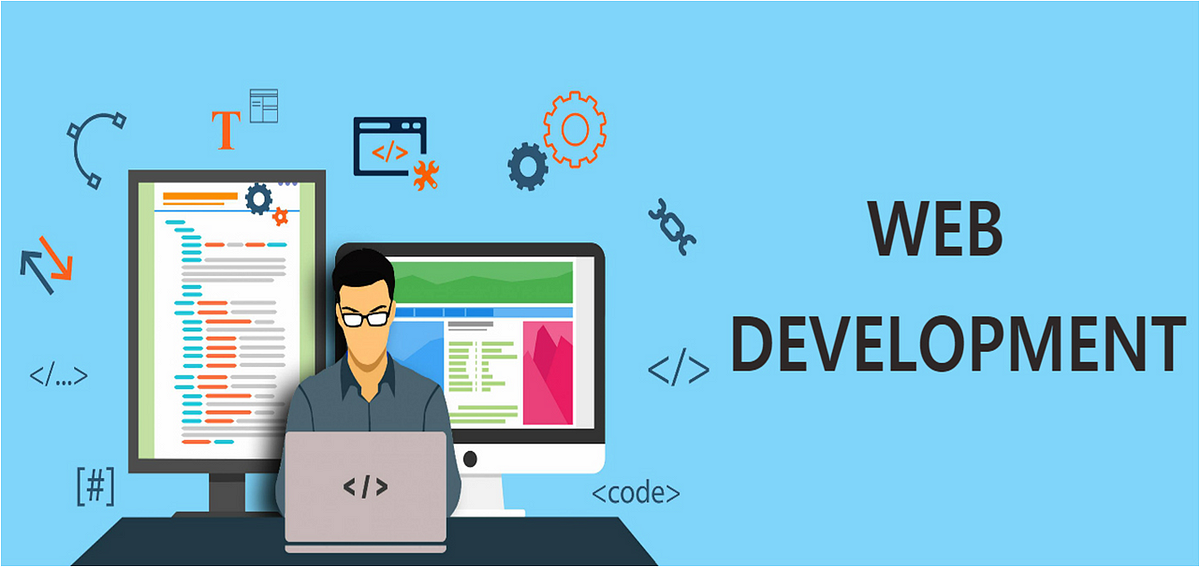In today’s digital age, web development is one of the most in-demand and rewarding career paths. Whether you’re looking to build your own website, start freelancing, or pursue a full-time job in tech, learning web development opens the door to a world of possibilities.
If you’re wondering how to learn web development, this comprehensive guide will walk you through every step — from understanding the basics to becoming job-ready.
What Is Web Development?
Web development is the process of building and maintaining websites. It involves everything from designing the layout of a website to writing code that makes it functional and interactive.
There are three main types of web development:
-
Front-end development: What users see and interact with (HTML, CSS, JavaScript).
-
Back-end development: The server-side logic, databases, and APIs (Node.js, Python, PHP, etc.).
-
Full-stack development: A combination of front-end and back-end skills.
Step 1: Understand the Fundamentals
Before diving into complex frameworks or tools, you need to build a solid foundation in the core technologies:
✅ Learn HTML
HTML (HyperText Markup Language) is the skeleton of all websites. It structures the content (headings, paragraphs, links, images, etc.).
✅ Learn CSS
CSS (Cascading Style Sheets) is used to style your HTML — colors, layouts, fonts, animations, and more.
✅ Learn JavaScript
JavaScript makes websites dynamic. It enables interactive features like sliders, form validation, pop-ups, and much more.
Resources to learn basics:
Step 2: Build Real Projects
Theory is important, but the best way to learn is by doing. Start with small, practical projects such as:
-
A personal portfolio website
-
A to-do list app
-
A blog layout
-
A simple calculator
Each project reinforces what you’ve learned and helps you understand how different technologies work together.
Step 3: Learn Responsive Design
With mobile devices dominating web traffic, it’s crucial to learn how to make websites responsive. This involves:
-
CSS Flexbox and Grid
-
Media queries
-
Mobile-first design principles
Tools like Bootstrap can help, but understanding raw CSS layout techniques gives you more control and flexibility.
Step 4: Dive Into Version Control (Git & GitHub)
Git allows you to track changes in your code. GitHub is a platform where you can store your code, collaborate with others, and showcase your work.
Learn the basics:
-
Initializing a Git repository
-
Committing changes
-
Pushing to GitHub
-
Creating branches and pull requests
Step 5: Explore JavaScript Frameworks and Libraries
Once you’re comfortable with vanilla JavaScript, move on to popular tools that make development faster and more powerful:
-
React.js: The most widely used front-end library for building user interfaces.
-
Vue.js or Angular: Other options for front-end development.
-
Tailwind CSS: A modern utility-first CSS framework.
Step 6: Learn the Basics of Back-End Development
To become a full-stack developer, or to understand how servers work, start learning back-end concepts:
-
Languages: Node.js (JavaScript), Python, PHP, or Ruby.
-
Databases: MongoDB, MySQL, PostgreSQL.
-
APIs: Learn how to fetch and send data between client and server using RESTful APIs or GraphQL.
Use frameworks like Express.js (for Node) or Django (for Python) to build back-end logic quickly.
Step 7: Deploy Your Projects
Learning to deploy your applications is an essential part of the web development process.
Free platforms to get started:
-
Netlify or Vercel (for front-end React or static sites)
-
Render or Heroku (for full-stack applications)
-
GitHub Pages (for simple static sites)
Understand domains, DNS, SSL, and hosting basics.
Step 8: Build a Portfolio and Resume
Your portfolio is your proof of work. Include:
-
A clean personal website
-
3–5 well-documented projects
-
Links to your GitHub and LinkedIn profiles
-
A brief “About Me” section and contact form
Step 9: Stay Updated and Join the Developer Community
Web development evolves rapidly. Keep learning through:
-
Tech blogs and newsletters
-
Developer YouTube channels and podcasts
-
GitHub trending projects
-
Online communities like Stack Overflow, Reddit, or Discord
Final Thoughts
Learning web development is a journey — not a one-time event. It requires patience, persistence, and continuous practice. Start small, stay consistent, and don’t be afraid to make mistakes — each error is a stepping stone to mastery.
Whether you want to freelance, launch a startup, or land a job at a tech company, web development gives you the tools to build and create your future on the internet.
